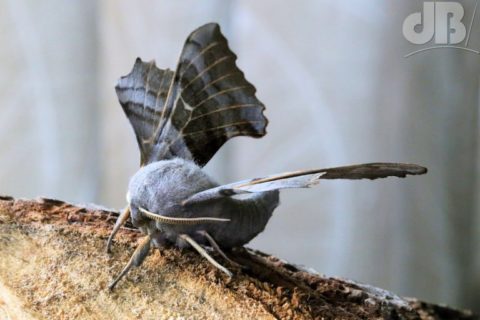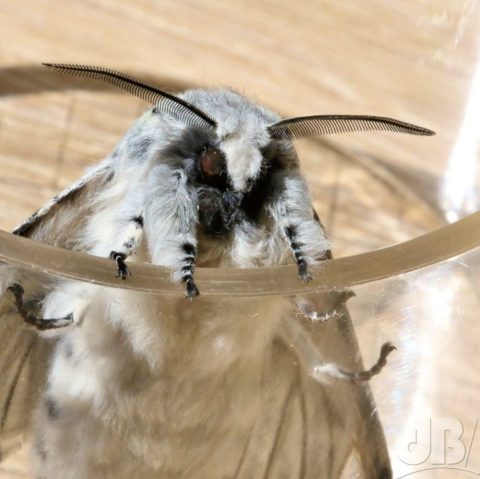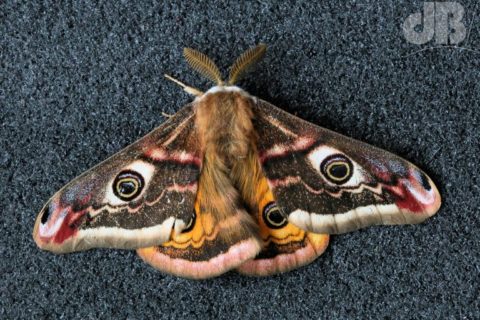Moths are drawn to flames, to bright lights, and as any good moth-er knows, ultraviolet. But why? That question has no answer…yet…although there is plenty of #DeceivedWisdom.

The first and perhaps most well-known explanation as to why moths are drawn to light is that they normally use the moon to navigate and an artificial light confuses their biological sat nav. This is very unlikely. Most moths don’t migrate and in general, don’t really need to navigate they just need to flutter around their locale to find food and a mate.
But, some moth-ers might say, there is always less of a haul in the UV scientific trap on nights when there is a full moon. The obvious explanation for that is that moths are simply less active because the night itself is brighter and they would be more exposed to predators, as they might be during the day. Although, bats are one of their biggest predators and, of course, they don’t rely on vision to catch moths, rather echo location.

Lots of species aren’t drawn to light at all, they prefer odour and specifically the pheromone odour of the female, at least that’s the case of the day-flying males of the Emperor species, discussed here previously. There was a theory in the 1970s that suggested male moths somehow confuse the light source with the luminescence of the female’s sex pheromones. But, while those pheromones can be made to glow under certain conditions, generally in a laboratory, they don’t glow at the same wavelengths as ultraviolet. More to the point, females are drawn to light too, so it’s probably not about moth sexual attraction.

My own pet theory, is that there’s some kind of confusion in the moth brain when they see a light. Perhaps there is some kind of “cross talk” between their senses (the same kind that we know of in people with synaesthesia who can smell colours or see music). Could those moths that are drawn to light be anticipating something else, maybe the light “smells” like food or sex attractants.
Maybe it’s a more blunt effect. The light source saturates their senses and stimulates the reward neurones in their brains as might an orgasm in higher animals or, indeed, opium derivatives, and in doing so in such an intense way that they cannot help but be drawn to that flame and to circle it.
Gunnar Brehm of the University of Jena, Germany, told me that, unfortunately, there is no answer to the moth-to-a-flame problem. “It would be great to have one,” he said. “I agree that the moon theory is not likely to apply and some sort of confusion happens.” So, perhaps my theory is close to what’s actually going on…
Brehm adds that “Short wavelengths at night have simply not been there before humankind invented artificial lights.” He and his research team are currently working on the problem. “We are carrying out choice experiments with different wavelengths – four lamps in four corners of a hall. When moths are offered white, green, blue, and UV, the vast majority is attracted to UV,” he told me. “However, when I replace UV by red the next night, the majority of moths is then attracted to blue.”
This suggests that short wavelengths (higher frequency, greater electromagnetic energy) are always the most attractive ones to moths that are attracted to light. Brehm adds that, “When there are no short wavelengths, a yellow light can also attract insects. That explains why moths can still be attracted by candlelight.”
Of course, the shorter the wavelength of light, the higher its energy in the electromagnetic sense. I’m talking light energy here, not the electrical wattage of the bulb. My hypothesis about why moths, and other insects, are attracted to light would fit with this, more energy would be more stimulating. Males are more frequently attracted to light than females, so, again this suggests the male moth psyche perhaps seeks out the stimulation or is more readily bedazzled by it.
In the absence of UV, much lower energy yellow light would have to suffice and would have done for millions of years before humanity came along with its actinic, fluorescent tubes, mercury vapour lamps, and UV LEDs.
UPDATE: 30 Jan 24 – New work from Sam Fabian, an entomologist at Imperial College London suggests that moths try to put their backs to any light source and this is why they end up spiralling around a lamp. That, doesn’t seem to explain what initially draws them to a flame or lamp, however.
Fellow moth-ers might be interested in Brehm’s work on assessing UV LEDs for attracting moths here and here. He and his colleagues have pioneered lepidopteral science with UV LEDs. One advantage is that LEDs can be very precisely configured to give a particular range of wavelengths at a specific wattage. This means they can be used to test attraction at different wavelengths with the source at a standard output energy (unrelated to the radiation frequency/energy).
“We are working with modified types of the described lamp (first reference above), and it was possible to standardize the wattage of the lamps; so the emission is very similar but the wavelength is different,” Brehm told me. “We number each specimen, determine the sex and count each day what is caught and not caught.”
Brehm’s team has found significant differences between species: in some, males and females are attracted in similar quantities, in others far more males are attracted, but the attraction of short wavelengths appears to be rather universal,” he adds. The research will be written up for scientific peer review and publication later this year.